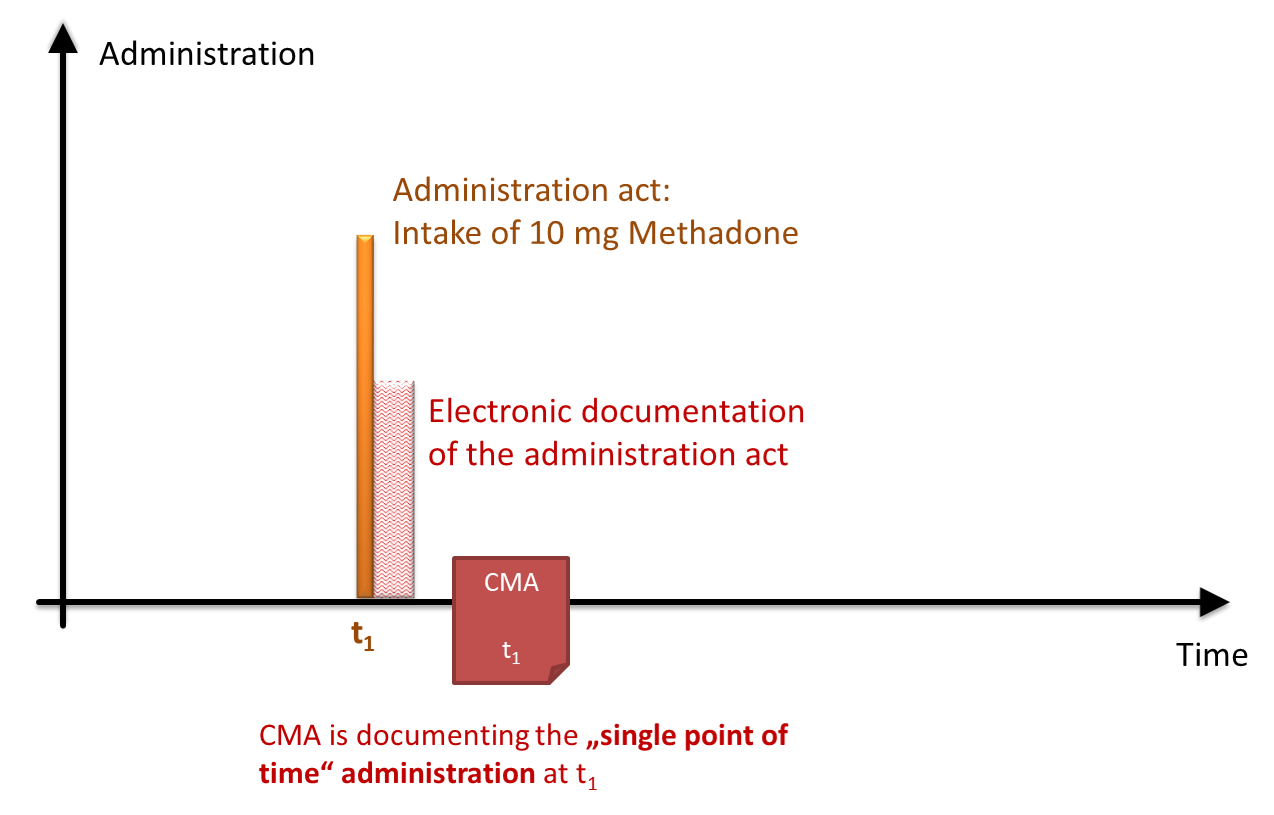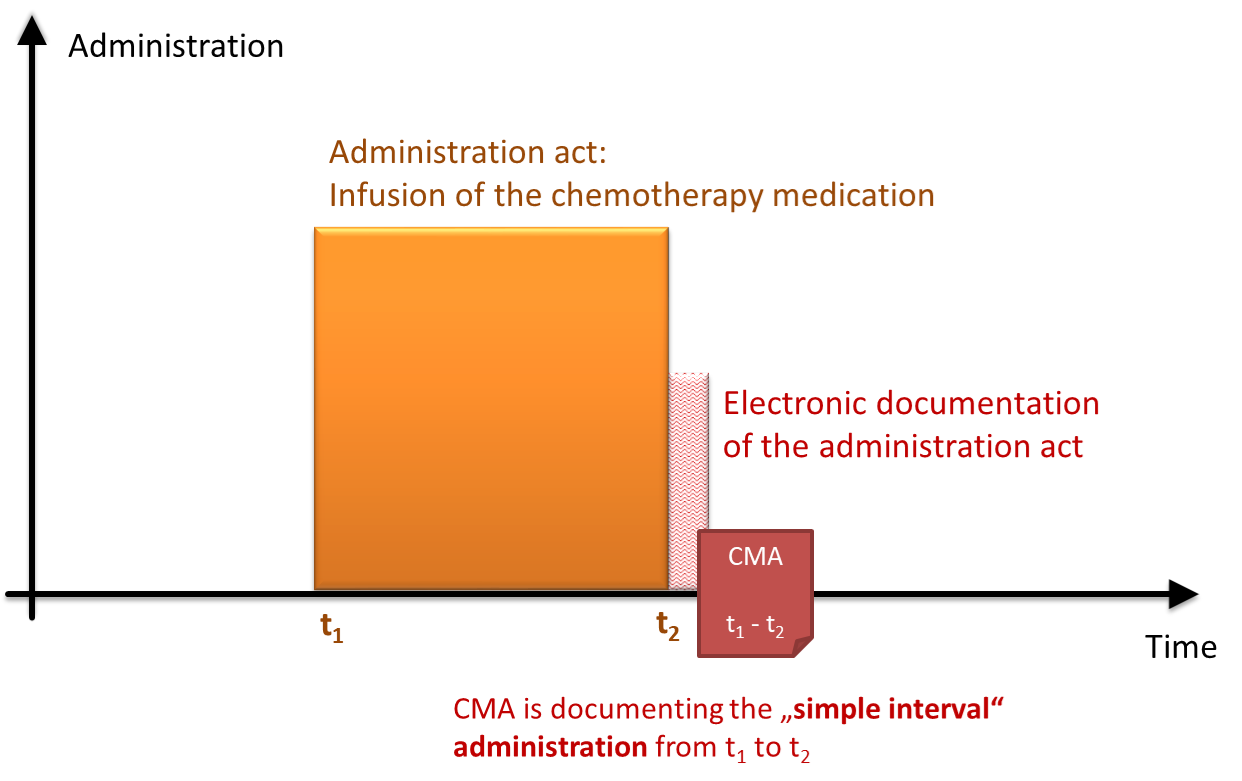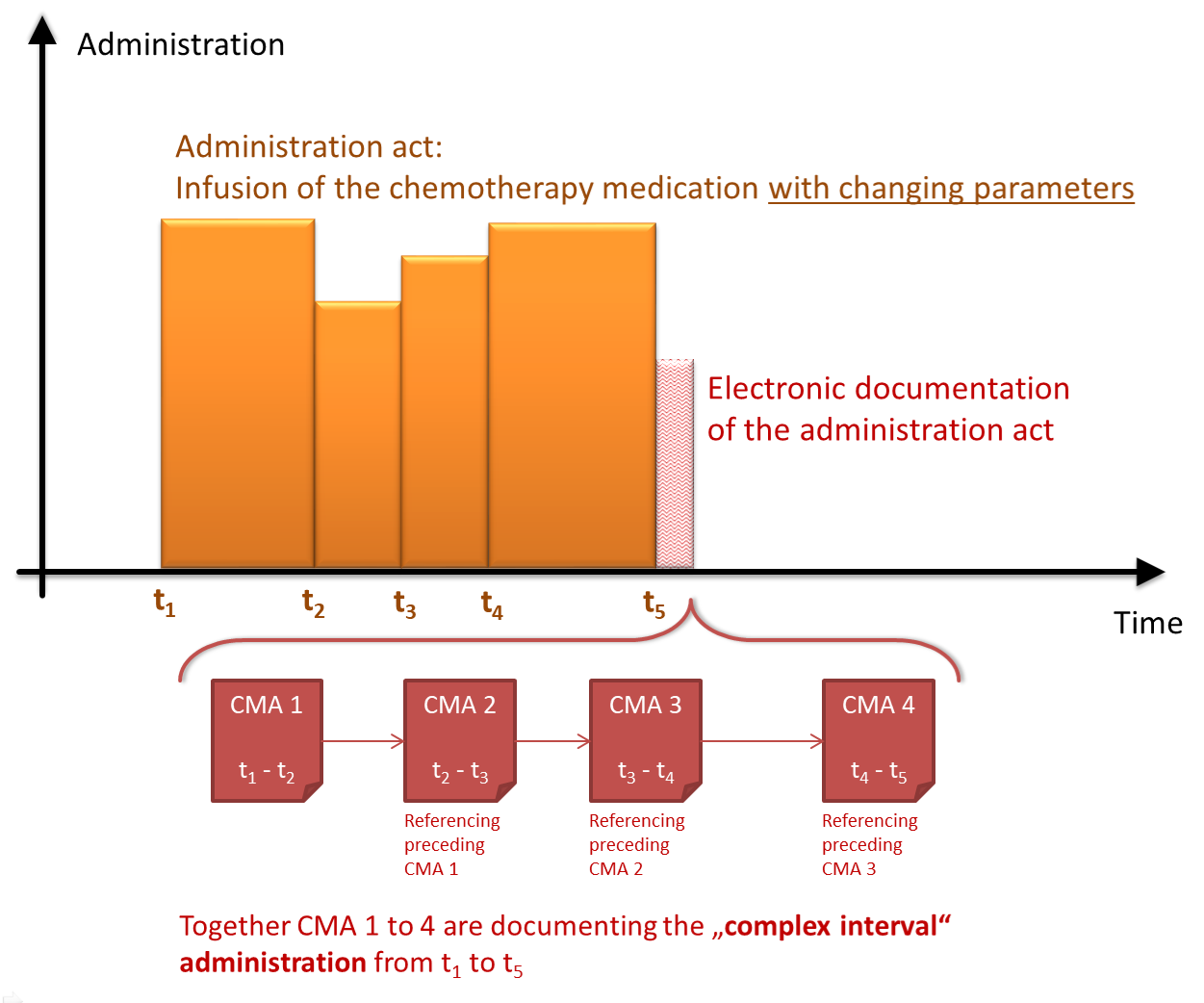Community Medication Administration
Summary
The Community Medication Administration (CMA) is a Content Module Profile describing the content and format of an administration document generated during the process in which a health care professional (physician, pharmacist, nurse, etc.) administers a medication to a patient. The process may also be performed by the patient him- or herself (self-administrations) or others (e.g., relatives, etc.).
Benefits
The profile provides the standardized content specification for recording all kinds of Medication Administrations in the Commmunity Pharmacy setting.
Depending on the nature of the medication, the administration event may take place at a single point of time (e.g., intake of tablets) or may take place as an interval process having a start and end time (e.g., infusion).
The interval process can be divided into a “simple interval” variant, where only one interval is documented and “complex interval” variant, where multiple, related intervals are documented (e.g., because the parameters of the administration, such as medication, dose, drop-rate, etc., changed during the timespan of the overall administration process). The scope of this profile is to cover all of the characteristics of administrations.
Documents created according to this profile are intended to be used in the context of the “Community Medication Prescription and Dispense” Integration Profile (CMPD).
The profile improves the quality and safety of the documentation of Medication Administrations by enhancing the readability of such documentations and reducing errors.
Details
In the Community Pharmacy setting most of the medication administrations are performed by the patient at home and are usually not electronically documented. The last point, where a healthcare professional may electronically document a medication-related interaction with the patient is at the point of medication dispense, where the medication is handed over to the patient in the pharmacy. Whether or not the patient is actually taking the medication is often unknown and the care-taking healthcare professionals have to rely on the word of the patient.
However, there are cases the administration of medication to the patient might be recordable in electronic form by a healthcare professional even in Community Pharmacy setting.
Some cases where medication administrations might be recorded electronically by a healthcare professional in the Community Pharmacy setting:
- Drug-substitution intakes in front of the pharmacist
- The patient enters the pharmacy and wants to get its prescribed drug-substitution medicine dispensed. The pharmacist dispenses the medication to the patient, but legal requirements enforce that the patient performs the intake of the medicine in front of the pharmacist. Thus witness of the actual intake the pharmacist enters the administration information in its software system, which creates and publishes an administration record according to the CMA Profile.
- The administration of vaccinations by the primary care physician
- The patient enters the physician office and requests a vaccination. The physician performs the immunization and enters the administration information in its software system, which creates and publishes an administration record according to the CMA Profile.
- Chemotherapy administration
- The medicine for the Chemotherapy treatment, e.g., ambulatory at a hospital, is administered to the patient in a controlled environment by healthcare professionals. After the administration act is completed, the healthcare professional enters the administration information in its software system, which creates and publishes an administration record according to the CMA Profile.
- Administration of contrast agents at a radiologic examination
- The patient is referred to a specialist for radiology to get an examination performed, which requires the use of contrast agents. The healthcare professional administers contrast agents to the patient before or during the radiology examination. Contrast agents can be administered more than one time during the examination.
After the radiology examination is completed, the healthcare professional enters all administration information in its software system, which creates and publishes one or more administration records according to the CMA Profile.
Medication administrations divide into the following characteristics
“Single point of time” administration The administration act takes place at one point of time (e.g., intake of tablets)
“Simple interval” administration The administration act takes place as an interval process having a start and end time (e.g., infusion) documenting a single set of parameters (medication, dose, drop-rate, etc.) for the whole interval (even if parameters changed during the interval, the changes are not recorded).
“Complex interval” administration The administration act takes place as an interval process having a start and end time (e.g., infusion), but is documented as multiple “simple interval” administrations, which are related to each other, because e.g., the parameters (medication, dose, drop-rate, etc.) changed during the process or for other reasons, e.g., the administering personnel changed during the process, etc.
Systems Affected
- Software modules for recording medication administrations in clinics, general practicion offices, etc.
Actors & Transactions
- Content Creator
- Content Consumer
Usually grouped with other actors such as the Medication Administration Performer actor of the Community Medication Prescription and Dispense (CMPD) profile.
Specification
Profile Status: Trial Implementation
Documents: IHE Pharmacy Technical Framework:
- [1] - Community Medication Administration (CMA) Supplement
Underlying Standards:
See Also
Related Profiles
The Community Medication Prescription and Dispense Integration Profile (CMPD) describes the process of prescription, validation, dispense and administration of medication in the community domain.
- Community Medication Prescription and Dispense [CMPD] defines actors and transactions
The following profiles are defining the content for the CMPD profile:
- Community Medication Treatment Plan [MTP] records the planning of medication to a patient.
- Community Prescription [PRE] records a prescription to a patient.
- Community Pharmaceutical Advice [PADV] records a pharmaceutical advice (validation outcome, management command, etc.) in response to a planned or prescribed medication.
- Community Dispense [DIS] records the dispensation of medication to a patient.
- Community Medication Administration [CMA] records the administration of medication to a patient.
- Community Medication List [PML] carries a list of planned, prescribed, dispensed or administered medication to a patient.
Consumer Information
None
Implementer Information
None
Reference Articles
None
This page is based on the Profile Overview Template



